Before starting a Tabata workout, it is essential to begin with a Tabata warm-up. Indeed, even if your Tabata workout only lasts 4min, it is still a High-intensity interval training (HIIT). This type of training provides many benefits, such as rapid weight loss and increased muscle mass. However, due to the intensity of this exercise, you should not neglect the warm-up. Doing Tabata without an introduction is a sure way to suffer from aches and pains for several days or, more seriously, injure yourself. Discover our beginner-friendly Tabata warm-up exercises and how they could improve your Tabata performance.
Tabata warm-up advises for beginners
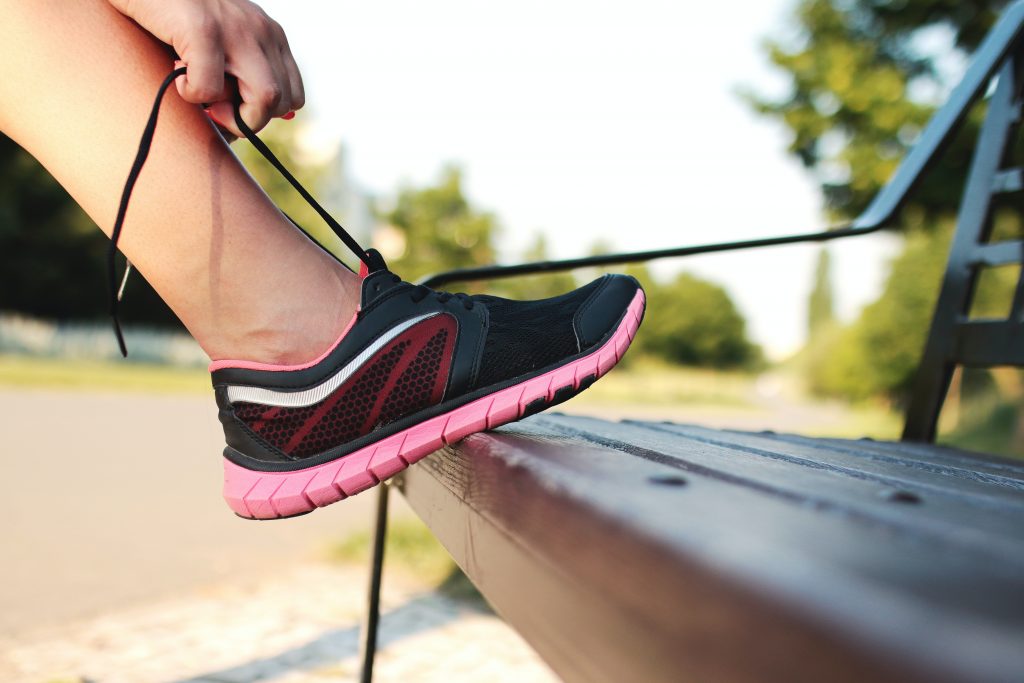
There are two types of warm-ups:
- Static warm-up
- Dynamic warm-up
The static warm-up consists of exercises where you sit or stand still and stretch specific muscles to prepare them for the activity. While the dynamic warm-up involves exercises in which we are in movement. It is these movements that will warm up and soften the muscles. So, which one is the best before a Tabata workout? First, you perform a dynamic warm-up should before HIIT training. Indeed, dynamic warm-ups increase blood flow to the muscles and activate muscle fibers before engaging in high-intensity exercise. Moreover, this is especially beneficial for HIIT sessions because the athlete’s muscles are warmed up, ready to push hard, and avoid injury. Finally, prefer static stretching after training to improve flexibility.
If you are looking for a Tabata beginner-friendly workout after your warm-up, don’t hesitate to check our article about it: TABATA workout for beginners: 4-min fat-burning exercises
Tabata warm-up advantages
There are many benefits to performing dynamic warm-up exercises before a Tabata workout. And yet, this is a step that many people skip.
1) Tabata preparation to reduce the risk of injury
Dynamic warm-up can significantly increase your resilience to injury during high-intensity training. Indeed, it will provide the necessary elasticity to the tendons and allow them to be less prone to inflammations such as tendonitis. Furthermore, your muscles will gain flexibility, the working amplitude will be better, and you will reduce the risks of tear, contracture, and elongation.
2) Stimulates nervous system
Warming up will increase the body heat, which will improve the transmission of nervous activity. Thus, this will directly impact the quality and contraction of the muscles during your exercises.
3) Increases heart rate
They increase the heart rate and get the blood pumping to the muscles. It allows the physiological systems to increase body temperature, cardiac output, and blood flow. So, it prepare yourself for an intense workout. In addition, this process can improve your aerobic capacities at the beginning of an activity.
4) Improves muscular performance
During a dynamic warm-up, the body temperature increases. This body temperature increase leads to greater enzymatic activity. In addition, it increases muscle metabolism and a more significant release of energy to the muscles. Therefore, it allows the muscles to work harder and longer.
5) Increased body temperature
Increasing body temperature prepares the muscles, joints, and connective tissues for higher-intensity movements.
6) Improve blood flow to muscle fibers
Adding a dynamic warm-up will open up the blood capillaries, ensuring that oxygen-rich blood is delivered to your muscles from the start of the workout.
Example of Tabata warm-up

- Running in place 20s
- Front kicks 20s
- Knees up 20s
- Squats 20s
- Jumping lunges 20s
- Repeat the sequence 2 to 3 times.
This Tabata warm-up don’t require any equipment and can be done anywhere.
Best Tabata warm-up exercises for all levels
Here is a series of dynamic Tabata warm-up exercises that don’t require equipment to perform before your Tabata session.
1) Tabata warm-up exercise : Running in place
This basic warm-up exercise works mainly on the quadriceps. It helps build up the lower back and provides good lumbar strengthening.
2) Front kicks
- Stand with your back straight and hands at your pectoral level.
- Raise your right knee to your hips while contracting your abs.
- Fully extend the raised leg, return to the starting position, and repeat the movement.
3) Knees up
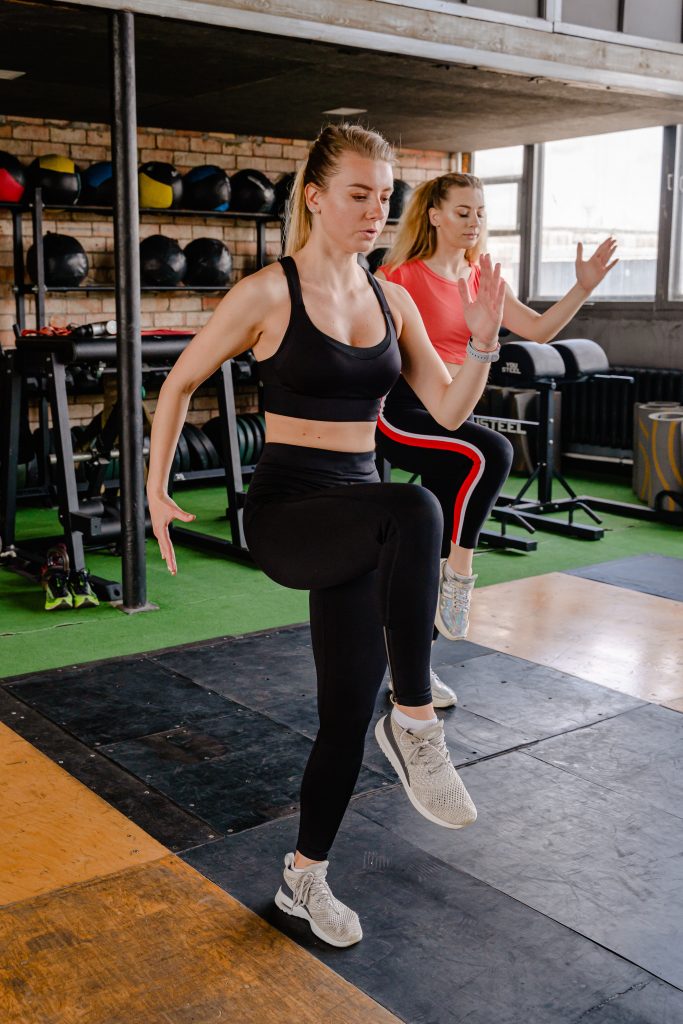
- Start standing with feet hip-width apart, hands at your sides.
- Start running in place and bring your knees up high.
To keep your balance, swing the arm opposite the raised knee. Don’t forget to keep your back straight without leaning back and to contract your abdominal muscles.
4) Squats
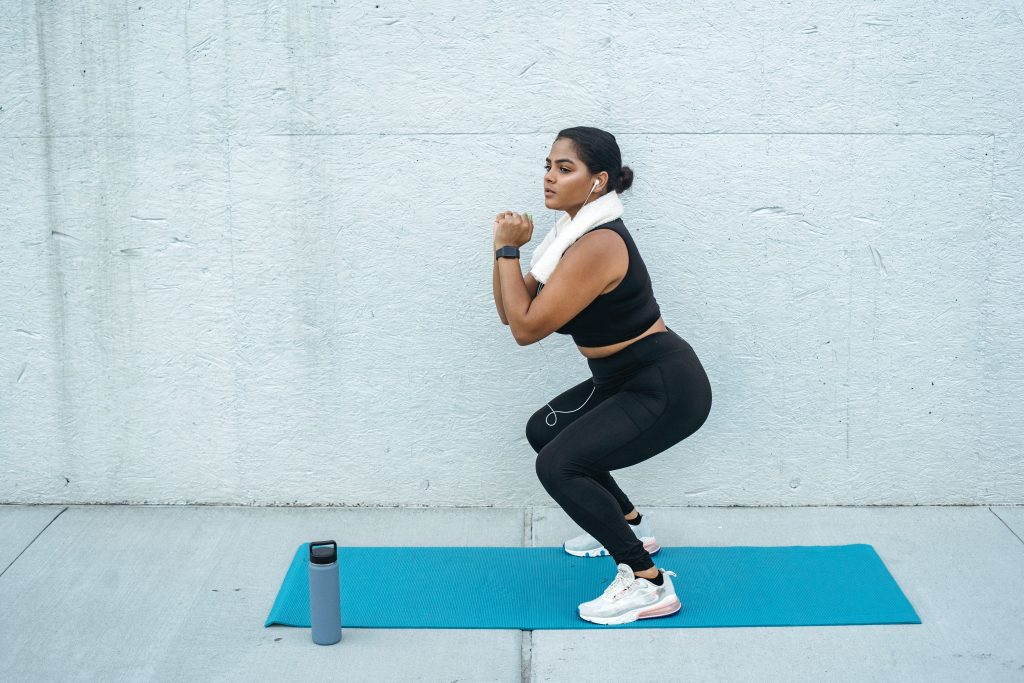
- Stand with your feet slightly wider than shoulder-width apart.
- Look ahead as you slowly bend your knees until your thighs are parallel to the floor.
- Bend your knees, send your hips backward as if sitting down, and return to the starting position.
Contract your abdominal muscles throughout the exercise. And, note that during this Tabata warm-up exercise your legs should be at a 90-degree angle, and your feet should be very slightly apart from the outside.
5) Jumping lunges
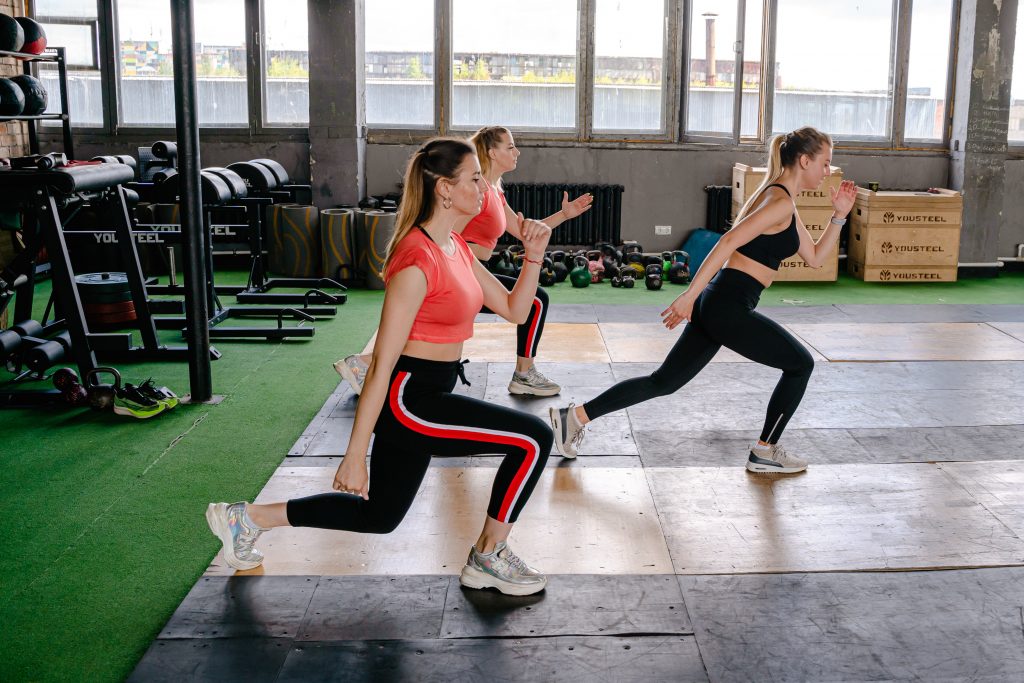
- Stand with feet hip-width apart.
- Make a forward lunge.
- Jump vertically in an intensive manner.
- Then, alternate legs as you jump and fall back to the forward lunge position, but this time to the other side.
- Repeat.
6) Donkey kicks
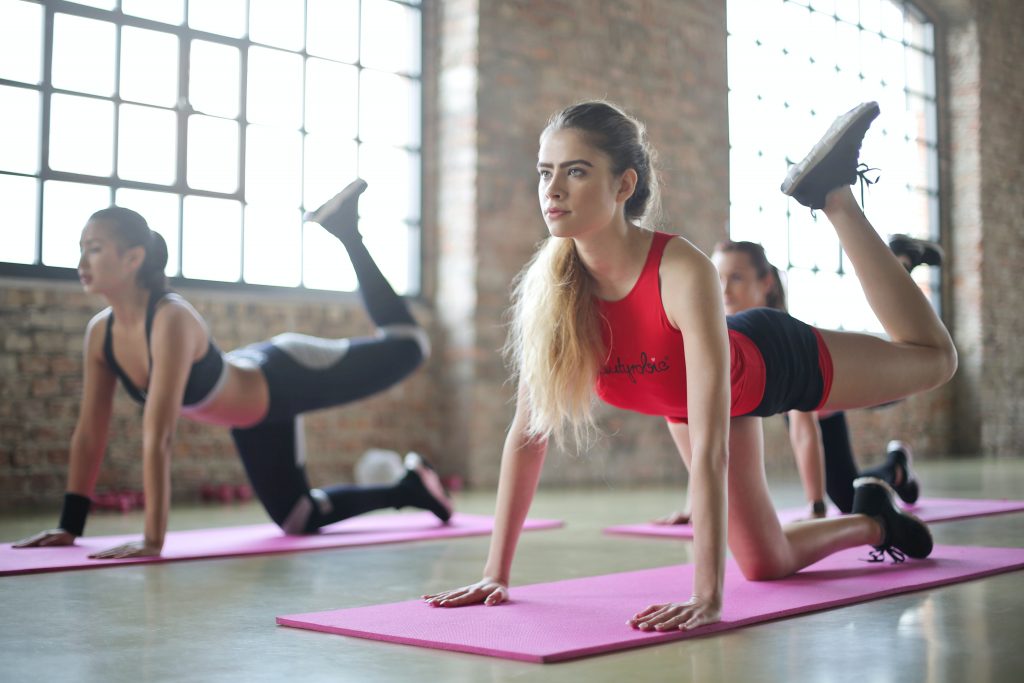
- Start on all fours, hands, and knees on the floor. Your head should be in line with your back and eyes on the floor.
- Contract your abs without lower your back.
- Throw one leg behind you until it is straight.
- Align your leg with your back and then return to the initial position to repeat the movement by alternating the raised leg.
7) Squat jump
We mix the squat with a vertical jump in this Tabata warm-up exercise:
- Do a squat but when you come up, jump up explosively with your arms up.
- Control your landing and immediately drop back down to the squat position for another explosive jump afterward.


